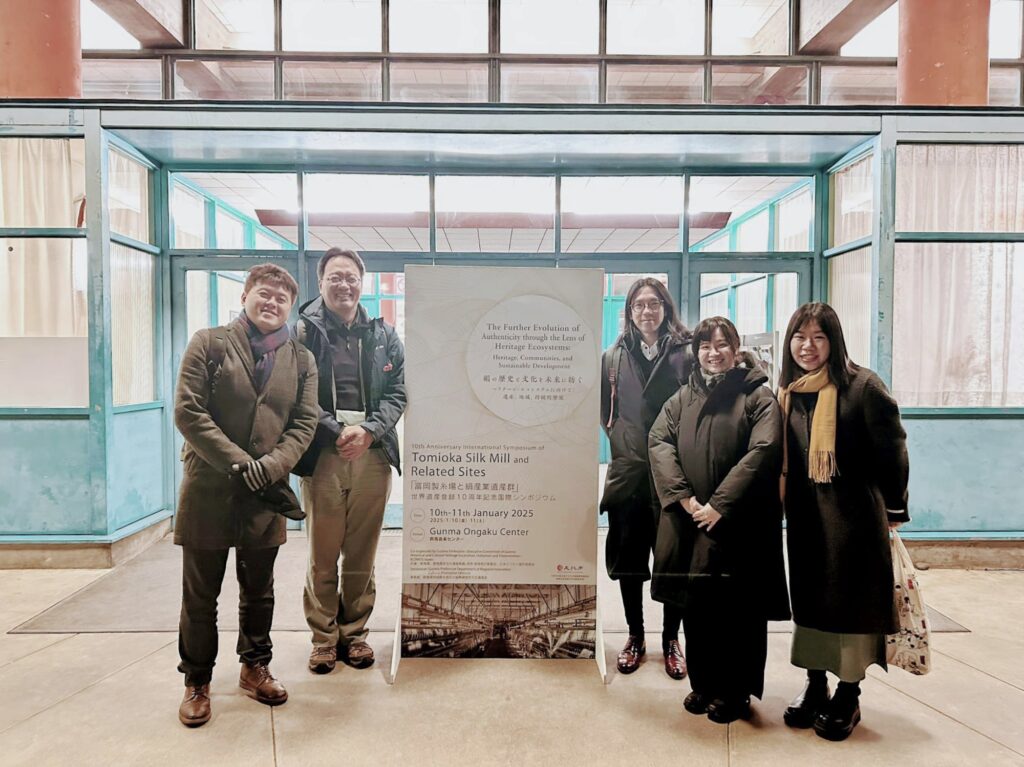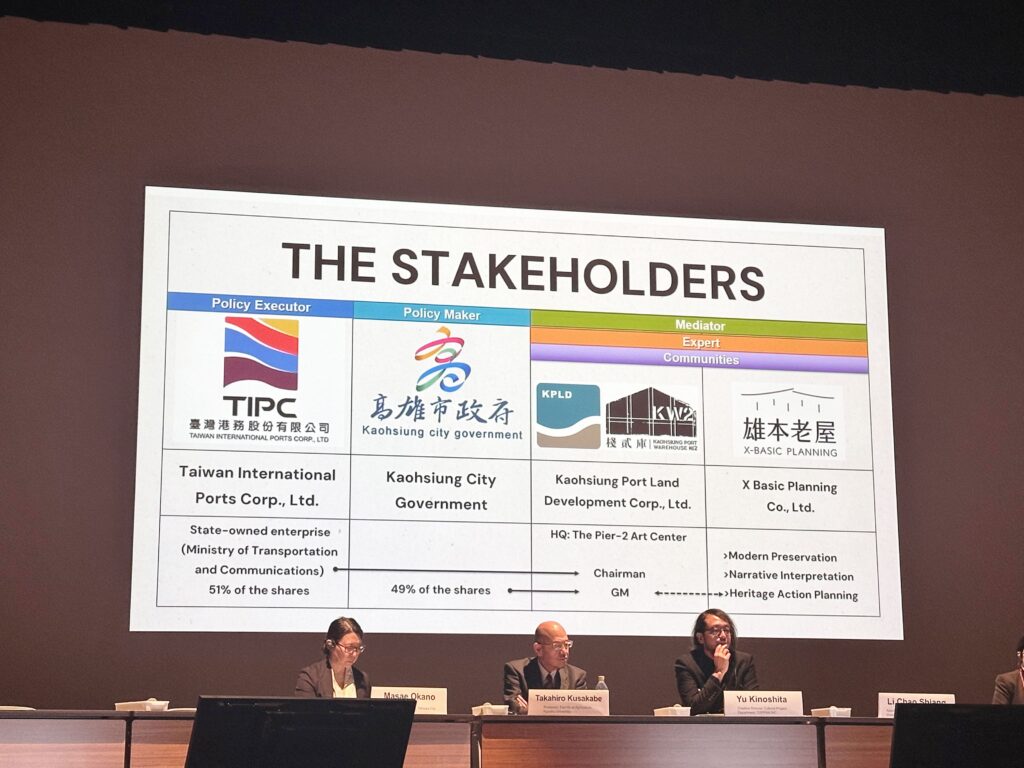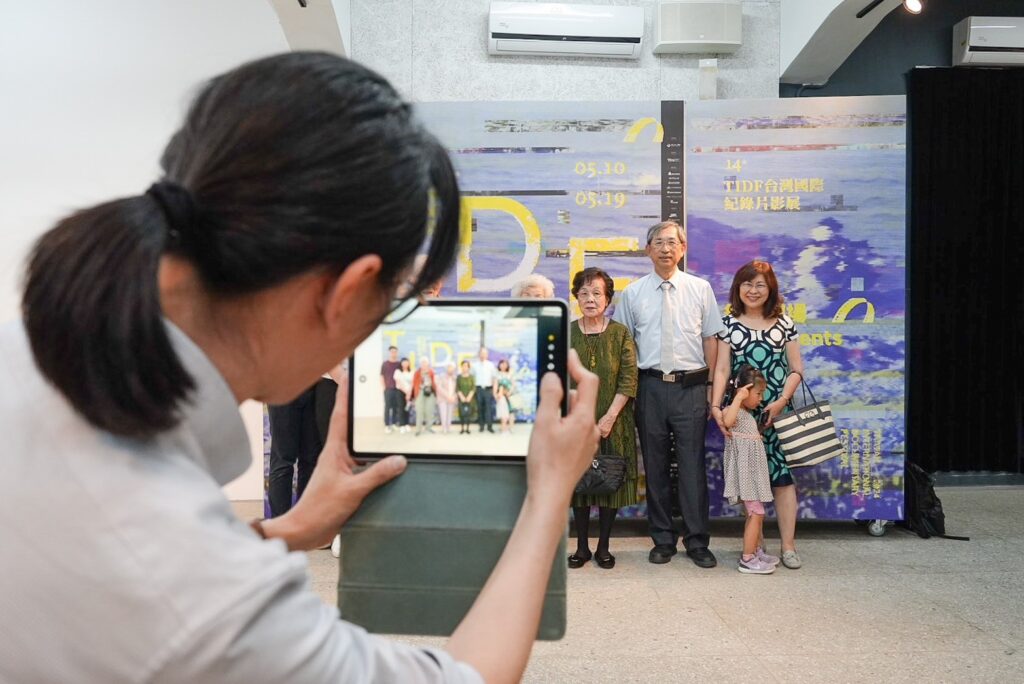Island Tapestry, Weaving a New Chapter in International Cultural Preservation: Tomioka Silk Mill International Forum
“Under the framework of a heritage ecosystem, even sites with different typologies, distinct historical values, and hundreds of interpretations of authenticity can form an interdependent and symbiotic organic whole, providing people with a broad perspective in embracing the diversity of cultural heritage.” —Quoted from the ‘Gunma Declaration on Heritage Ecosystems, 2025’
Taiwan’s historical context, woven from numerous cultures, has shaped the unique texture of each city. The cross-generational buildings with their rich expressions serve as witnesses to the island’s multi-layered essence. With a commitment to caring for the land, the X-Basic Planning team has long been dedicated to the issue of revitalizing old buildings. Beyond actually implementing the restoration and adaptive reuse of old buildings, we also attempt to deepen our core discourse systematically through research and analysis. In 2024, we collaborated with Professor Li Zhao-Xiang from the Department of Interior Design at China University of Technology to submit a paper at the international symposium marking the 10th anniversary of the Tomioka Silk Mill and Related Sites’ inscription as a World Heritage Site. Our presentation focused on the revitalization approaches of ‘Lukang Chang Yuan Hospital’ and ‘Kaohsiung Warehouse No. 2,’ exploring how a ‘cultural heritage ecosystem’ can be established within these sites, thereby engaging in dialogue with experts and scholars from around the world.
As a site of transformation in Japan’s modern silk industry, the Tomioka Silk Mill and Related Sites, registered as a World Heritage Site in 2014, not only demonstrates the value of tangible heritage through comprehensive architectural management and maintenance but also weaves the intangible ‘silk culture’ into the overall narrative, establishing a model for cultural preservation. On the occasion of its 10th anniversary of revitalization, 80 cultural heritage scholars and local residents from 18 countries around the world gathered at this symposium to share experiences, build consensus, and, 30 years after the establishment of the ‘Nara Document,’ jointly draft the ‘Gunma Declaration,’ outlining a blueprint for the direction of international cultural preservation for the next decade.

Taiwan’s Current Situation Viewed from a Global Perspective
With the changing times, the value of cultural heritage is no longer limited to the freeze-frame preservation of physical buildings and objects from the past. How to balance the continuation and revitalization of historical textures while moving toward contemporary living has become a subject that venue operators must explore continuously. The concept of a ‘Cultural Heritage Ecosystem’ has emerged as an answer to this quest, emphasizing the cyclical and organic connections between heritage sites, their surrounding environments, and residents as the key to sustainable regeneration—a principle that aligns perfectly with X-Basic Planning’s philosophy.
In the conference paper ‘The Stewardship of the Historic Portside Warehouses: A Creative Economy Approach’, Professor Li Zhao-Xiang and Co-founder Hsiao Ding-xiong used ‘Kaohsiung Warehouse No. 2′ (a restoration, curation, and operational planning project in which the X-Basic Planning team participated in) as a case study, elaborating on its operational philosophy and transformation process. Warehouse No. 2 was transformed from a goods distribution center during the Japanese Rule Period into a cultural and artistic base for the port city, and integrated with local residents’ daily lives by introducing local businesses, showcasing cultural and creative products, and connecting with surrounding landscapes. Collaboration with local organizations and translation and representation of historical and cultural contexts have helped preserve the spirit of the venue. Following the contextual thinking of ‘Historic Urban Landscape (HUL)’, Warehouse No. 2’s dynamic qualities that allow for change, along with its nuanced local perspective, form the foundation for this historic site to coexist closely with urban life.



Beyond cases like Warehouse No. 2 with clear public domain characteristics, we also focus on the emotional connections and living contexts that community heritage sites carry for residents, as well as the roles played by local communities in the process. Thesis “Looking Back at the Family Houses of Lukang’s Belle Époque: From Shops and Clinics to the Photographer’s Residence” (The Family House to Lukang’s Belle Époque: A New Journey of Commerce, Clinic, and Camera), using X-Basic Planning’s own case study ‘Lukang Chang Yuan Hospital’ as the research subject to explain the challenges and solutions in decision-making for privately owned historic buildings. Compared to the transformation and interpretation of Pier 2 Art Center as an industrial heritage site, the residential nature of Chang Yuan Hospital not only preserves its complex trajectory of continuous transformation through changing times but also traces conceptual reconciliation among family members, community residents, experts, scholars, and government agencies during the revitalization process. Unlike most Taiwanese old houses that only begin to consider regeneration directions after being designated as cultural assets, the X-Basic Planning team has consistently promoted the rebirth of this cultural heritage through multi-party collaboration and joint discussions. This cultivates stakeholders’ sense of identity and responsibility toward the heritage, naturally constructing a ‘cultural heritage ecosystem,’ and even nurturing aspirations to build a support system for the regeneration of local old buildings. In this context, the revitalization of Chang Yuan Hospital has already transcended structural repair and preservation, creating opportunities for interaction between the building and the local community.
Building a Sustainable Future for Cultural Heritage Together
At the conclusion of the symposium, participants from around the world reviewed the draft of the ‘Gunma Declaration,’ carefully examining its content word by word to reaffirm the consensus formed during this meeting. They focused on contemplating the interdependent relationship between cultural heritage and support systems, establishing a milestone for this once-in-a-decade event that both honors tradition and pioneers the future. This reflects the conceptual shift in the preservation of cultural heritage in recent years: cultural heritage should not exist in isolation from contemporary society but should be integrated with regional connections and community networks to strengthen its resilience and sustainability.
Although Taiwan is not currently a formal member country of the International Council on Monuments and Sites (ICOMOS), and the island’s land area, architectural scale, and historical timeline may not be as vast or ancient as those of other countries, our abundant and closely-knit local energy and continuously innovative spirit of practice have given us the confidence and strength to stand alongside the international community. By connecting with international networks and reflecting on our own practical experiences, we believe that Taiwan’s advocates of cultural preservation will forge new paths with greater local value and universal applicability, kindling a small yet unique light for the sustainable development of the world’s cultural heritage.
